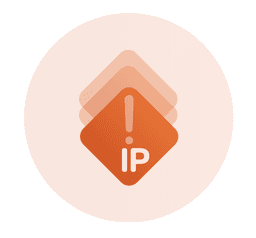Across the Healthcare, Life Sciences (HCLS), and Research sectors, we are witnessing an unprecedented race to Azure. The motivation is clear: to leverage AI-first innovation, unlock advanced analytics, and achieve significant operational cost savings. But let's be honest, for every organization dealing with Protected Health Information (PHI), Electronic Health Records (EHRs), and proprietary clinical trial data, this race hits a critical checkpoint—the compliance fear.
Securing these critical systems in a sprawling, distributed Azure environment is the single biggest inhibitor to cloud velocity. Simply put, native cloud tools alone are insufficient to provide the unified, verifiable defense framework required by HIPAA, GDPR, and other regulatory bodies.
The key to accelerating a compliant migration is adopting a unified, cloud native security model that acts as an invisible, always-on fabric—a requirement we must address to fully realize the power of Azure.
The Compliance Imperative: Moving Beyond Traditional Security
When highly regulated HCLS organizations—from providers managing EHRs to pharma securing R&D data—migrate to Azure, their first instinct is often to "lift and shift" their existing security architecture. They try to replicate their rigid on-premises perimeter models, relying on virtualized firewall appliances and complex VPN tunnels to demarcate boundaries.
This "lift and shift" approach is proving to be fundamentally flawed and generates complexity and bottlenecks rather than comprehensive security. This is due to an Azure environment thriving on dynamic scalability and distributed workloads, which eliminates the static perimeter that legacy firewall models were designed to protect. Forcing a security model built around a single, fixed data center entrance onto a boundary-less, micro-segmented cloud network introduces critical failure points and unacceptable latency.
In the cloud, the goal is no longer just perimeter defense; it is the mandatory implementation of zero trust principles across every workload, user, and connection, regardless of its location within the cloud.
For healthcare and pharma, this means:
HIPAA Mandates: Ensuring end-to-end encryption, application segmentation, and verifiable audit trails for PHI.
Clinical Trial Integrity: Securing high-value R&D platforms and clinical trials from internal and external threats.
Claims System Resilience: Isolating sensitive financial and claims processing data.
Aviatrix: Cloud Native Security Fabric for Azure
Aviatrix Cloud Native Security Fabric (CNSF) provides a robust, repeatable network and security architecture that overcomes Azure’s regional and subscription boundaries, turning your disjointed cloud estate into a unified, secure fabric.
1. Unified Zero Trust Architecture
The Aviatrix solution transforms Azure infrastructure into a secure, verifiable transit-based network architecture designed for distributed firewalling. This critical architectural shift moves security enforcement away from a centralized choke point and pushes the intelligence to the edge of the network.
Network-wide Policy Enforcement: Aviatrix decouples security logic from centralized Azure Firewall instances, enabling you to deploy and enforce granular security policies consistently across every VNet and subscription. This is true microsegmentation, where every workload-to-workload connection is treated as a security boundary.
Universal Visibility and Auditability: To meet HCLS audit requirements, you need proof of enforcement. The Aviatrix fabric provides a single pane of glass for network and security policies across all your Azure resources (and potentially other clouds). This universal visibility delivers the verifiable compliance and detailed flow logging necessary to simplify complex regulatory audits.
2. Pervasive Encryption (E2EE)
Meeting strict regulatory requirements often demands that data remain encrypted in transit across the cloud backbone and between the cloud and on-premise.
Securing EHRs and PHI: Aviatrix encrypts all traffic traversing its cloud fabric, including intra/inter-region traffic that might cross shared infrastructure. This ensures pervasive encryption that is verified and managed by the customer, giving you complete control over the secure exchange of PHI between providers, payers, and research partners.
Deep Integration with the Microsoft AI Stack
Compliance and security are only effective if they are agile. The power of the Aviatrix fabric lies in its ability to integrate deeply with Microsoft’s AI-first security tools to rapidly identify, triage, and remediate issues in real-time.
Azure Sentinel and Unified Security Data
The Aviatrix platform streams rich, actionable network and security telemetry directly into Microsoft Sentinel (the Cloud Native SIEM).
Real-Time Threat Detection: Sentinel combines the comprehensive network flow and security context from Aviatrix with logs from the Microsoft stack (Azure AD, M365). This unified data model allows for sophisticated correlation rules, enabling the rapid identification of complex threats—such as an external breach paired with lateral movement across the Aviatrix fabric.
CoPilot for Security: Rapid Triage and Response
This is where the AI integration accelerates security operations. When Sentinel flags an alert, Microsoft Security Copilot can be engaged to accelerate the response.
AI-Assisted Investigation: Copilot uses a Large Language Model (LLM) to instantly process the network telemetry, firewall logs, and security context provided by Aviatrix and Sentinel.
Rapid Triage: Instead of manually correlating data, a security analyst can ask Copilot, "Summarize the attack chain detected on the claims system VNet over the last 30 minutes and suggest a remediation action." Copilot provides an instant, natural-language summary and a verified response plan. This capability dramatically reduces the Mean Time To Respond (MTTR), which is critical for meeting regulatory reporting timelines.
Conclusion: Transform Compliantly and Quickly
For healthcare and life sciences organizations, cloud transformation cannot sacrifice security for speed. The combination of Aviatrix Cloud Native Security Fabric—providing verifiable zero trust and pervasive encryption—and Microsoft's AI-first security stack (Sentinel and Copilot) offers the necessary blueprint.
By adopting this proven strategy, you can secure EHRs, clinical trials, and R&D platforms while maintaining strict HIPAA and regulatory compliance, ensuring your move to Azure is not only successful but fundamentally secure.
Join us at Microsoft Ignite!
To learn more about implementing zero trust principles for HCLS organizations, join us at the Microsoft Ignite conference from November 18-21, 2025, booth 5516! Aviatrix Head of Product Chris McHenry will present a session on “Secure the healthcare cloud: Zero trust and AI-powered Azure defense” on Thursday, November 20.


















